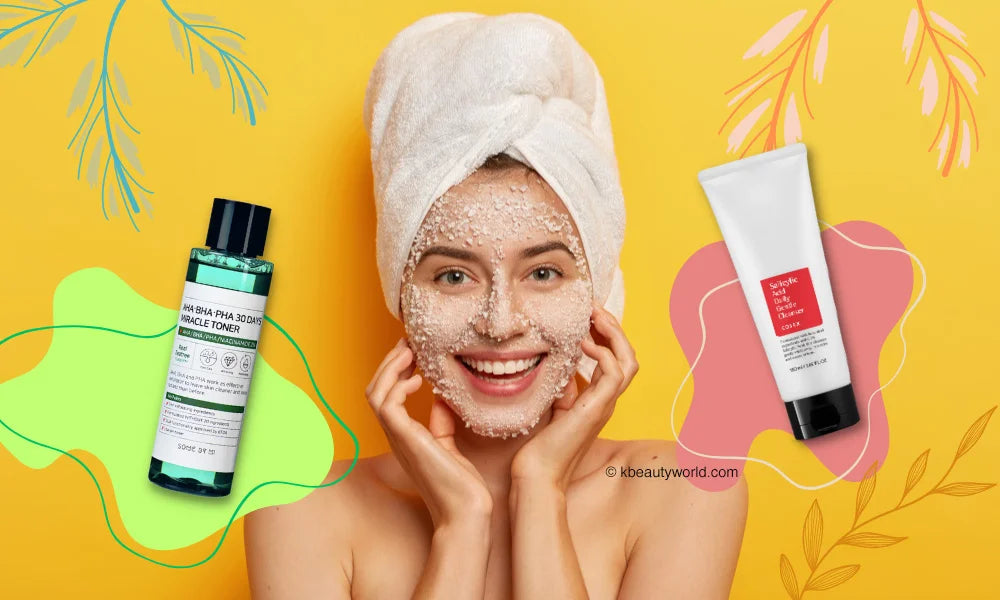Hydrating vs. Moisturizing: What My Skin Needs?
How do you find the right moisturizer formula for your skin? We have you covered. Get ready to unlock the secrets to effectively hydrating and nourishing your skin!

Have you ever wondered about the difference between hydrating and moisturizing your skin? These terms are often used interchangeably in the beauty industry, but they actually refer to distinct processes.
Understanding the distinction is essential for choosing the right skincare products that address your skin's specific needs. In this informative blog post, we'll break down the difference between hydrators and moisturizers, explore their benefits, and guide you on how to incorporate them into your skincare routine. Let's dive in!
The Difference Between Hydrators and Moisturizers
In fact, both cosmetics terms have the same fundamental role and there’s certainly a lot of overlap between the two. Many cosmetic brands use the terms "hydrating" and "moisturizing" without clear differentiation. To identify the purpose of a product, examine its ingredient list.
Hydrators: Amplifying Skin's Water Content
Hydrating products are designed to boost your skin's water content, resulting in a plumper, more supple complexion. These products typically contain humectants, which are water-soluble ingredients that effectively increase the water content in your skin cells without clogging pores.
They are suitable for all skin types and play a pivotal role in improving overall hydration. Avoid products containing alcohol, as they can lead to skin dryness and irritation. Keep an eye out for these common humectants found in hydrating formulas:
Common humectants include:
- Hyaluronic acid
- Glycerin
- Aloe vera
- Snail mucin
- Glycolic acid
- Sodium hyaluronate
- Allantoin
- Lactic acid
- Citric acid
- Sodium PCA
- Sorbitol
- Urea
- Panthenol
- Marine extracts
How to hydrate my skin?
Start with a hydrating product that contains humectants, such as a lightweight serum or ampoule. Apply it after cleansing and toning to increase moisture levels in the deeper layers of your skin.
Follow up with a moisturizer that suits your skin type. For dehydrated skin, consider an oil-based moisturizer to lock in the hydration provided by the hydrating product. Apply it as the final step in your skincare routine.
Moisturizers: Sealing in Moisture and Nurturing the Skin Barrier
Moisturizers, on the other hand, focus on preventing moisture loss by creating a lipid barrier on the skin's surface, and keep the skin soft and smooth. They contain emollients and occlusive agents that lock in moisture, keeping the skin soft and smooth.
Emollients provide moisturizing and lubricating properties, while occlusives create a protective layer on the surface of the skin that prevents water evaporation. Here are common emollients and occlusives found in moisturizers:
- Emollients: Squalene, beeswax, cocoa butter, dimethicone, shea butter, petrolatum, jojoba oil, argan oil, fatty acids, lanolin
- Occlusives: Shea butter, mango butter, mineral oil, dimethicone, petroleum jelly (Vaseline), lanolin, petrolatum, beeswax, soybean oil, carnauba, castor oil, olive oil
Many emollient ingredients that are high in oils also tend to have occlusive properties. Lanolin oil and dimethicone are an excellent example of an ingredient that ticks both the occlusive and emollient boxes. As a result, you'll find this ingredient in many facial and body care products.
Moisturizers come in various formulations, from lighter lotions to heavier creams, depending on the season and your skin type. For oily, acne-prone skin, opt for light, oil-free, non-comedogenic products.
Dry and sensitive skin types benefit from rich creams with emollients and occlusive agents. You can use a light gel or lotion for the spring and summer months and a heavier cream for the dry, cold fall and winter seasons.

How can I tell if my skin needs a hydrator, a moisturizer, or both?
To determine which product you need, it's crucial to assess its condition. Dehydrated skin lacks water, resulting in a dull complexion, tightness, and visible fine lines. On the other hand, dry skin lacks oil, resulting in rough texture and flakiness. Let's explore how to address each issue:
If you have dehydrated skin, try a hydrating serum
Dehydrated skin:
Signs of dehydration include dullness, tightness, and increased visibility of fine lines. To combat this, focus on incorporating hydrating products into your routine.
- Hydrators should be applied first: Begin with a water-based hydrating serum or ampoule, allowing it to penetrate deeper into your skin. These products contain humectants that attract and hold moisture.
- Follow with a moisturizer: Apply an oil-based moisturizer to seal in the hydration provided by the hydrator. This step ensures that both water and the benefits of your skincare routine are locked into your skin.
If you have dry skin, try a thicker moisturizer
Dry skin:
If your skin feels tight, rough, and prone to flaking, it is likely lacking in oil. To combat dryness, moisturizers play a vital role.
- Moisturizers are essential: Opt for a moisturizer that contains emollients and occlusive agents. Emollients help moisturize, nourish, and lubricate the skin, while occlusive agents create a protective barrier, preventing moisture loss.
- Choose the right formulation: Depending on your skin type and the season, select a suitable moisturizer. Lightweight lotions or emulsions work well for oily skin, while dry and sensitive skin benefits from richer creams.
🌟 Related blog post: 12 Best Korean Face Moisturizers for Dry Skin
Can I use hydrator and moisturizer together?
In certain cases, using both hydrating and moisturizing products can be beneficial. Begin with a hydrating product containing humectants, followed by a moisturizer containing emollients and occlusive agents to seal in moisture. Alternatively, seek out products that offer the benefits of both functions, simplifying your skincare routine.
Do you a hydrate or moisturize first?
To ensure optimal results, it's important to apply hydrators and moisturizers in the correct sequence.
- Hydrate first, moisturize second: Start with a hydrating product containing humectants to increase water content. Follow up with a moisturizer to lock in the hydration and provide nourishment.
- Enhancing absorption: Lightweight hydrating serums and ampoules with smaller molecule sizes penetrate deeper into the skin. Heavier face creams primarily work on the outer layer, sealing moisture and benefits into the skin.
Does oily skin need moisturizing or hydration??
Contrary to popular belief, even oily skin requires adequate hydration and moisture.
- Don't skip hydrating: Oily skin can still experience dehydration, which can lead to an overproduction of oil. Using lightweight, oil-free moisturizers helps maintain a healthy balance.
- Look for oil-free hydrators: Look for hydrating products that are water-based and non-comedogenic, specifically formulated for oily skin. These products provide essential hydration without adding excess oil.
🌟 Related blog post: 11 Best Korean Moisturizers for Acne & Oily Skin
Conclusion
Understanding the difference between hydrating and moisturizing is key to effectively nourishing and protecting your skin. Hydrators increase the water content, making your skin plump and supple, while moisturizers prevent moisture loss and maintain a healthy skin barrier.
By incorporating the right products for your skin type, you can achieve a well-hydrated and moisturized complexion. Harness the power of humectants, emollients, and occlusives to keep your skin healthy, radiant, and happy!
🌟 Read More: How to find the best moisturizer for your skin type?



Leave a comment
This site is protected by hCaptcha and the hCaptcha Privacy Policy and Terms of Service apply.